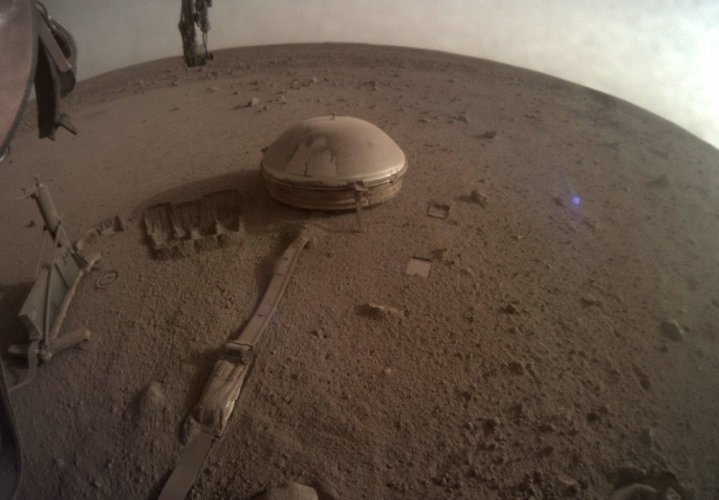Just over four years after reaching Mars, NASA has officially announced the end of its InSight lander mission.
The declaration came on Wednesday, December 21, after NASA failed to make contact with the lander across two consecutive attempts, leading the mission team at the Jet Propulsion Laboratory (JPL) to conclude that InSight’s solar-powered batteries had run out of energy, a state referred to as “dead bus.”
InSight — short for Interior Exploration using Seismic Investigations, Geodesy, and Heat Transport — had been gradually losing power due to a build-up of dust on its solar panels.
Earlier this week, NASA posted the final image (below) beamed back to Earth by InSight. It shows the lander’s wind and thermal shield that protected some of the robot’s science instruments.

And on Wednesday JPL tweeted a final message:
Rest easy, little lander ❤ @NASAInSight's mission has ended after more than four years of detecting marsquakes, meteoroid impacts, and unique science on Mars. Congratulations – and thank you – to the team that made these pioneering discoveries possible. https://t.co/MCRzWYFSMd pic.twitter.com/GJkVI88CWi
— NASA JPL (@NASAJPL) December 21, 2022
During its time on the Martian surface, the lander uncovered details about Mars’ interior layers, its liquid core, the variable remnants under its mostly extinct magnetic field, and the weather on Mars. It also achieved the first detection of seismic activity on another planet and even recorded a marsquake caused by a meteor strike. You can dive into the details of the mission’s achievements on NASA’s website.
Sharing thoughts on what has been deemed a very successful operation, Thomas Zurbuchen, associate administrator of NASA’s Science Mission Directorate, said: “I watched the launch and landing of this mission, and while saying goodbye to a spacecraft is always sad, the fascinating science InSight conducted is cause for celebration. The seismic data alone from this Discovery Program mission offers tremendous insights not just into Mars but other rocky bodies, including Earth.”
Bruce Banerdt, the mission’s principal investigator, commented: “We’ve thought of InSight as our friend and colleague on Mars for the past four years, so it’s hard to say goodbye. But it has earned its richly deserved retirement.”


